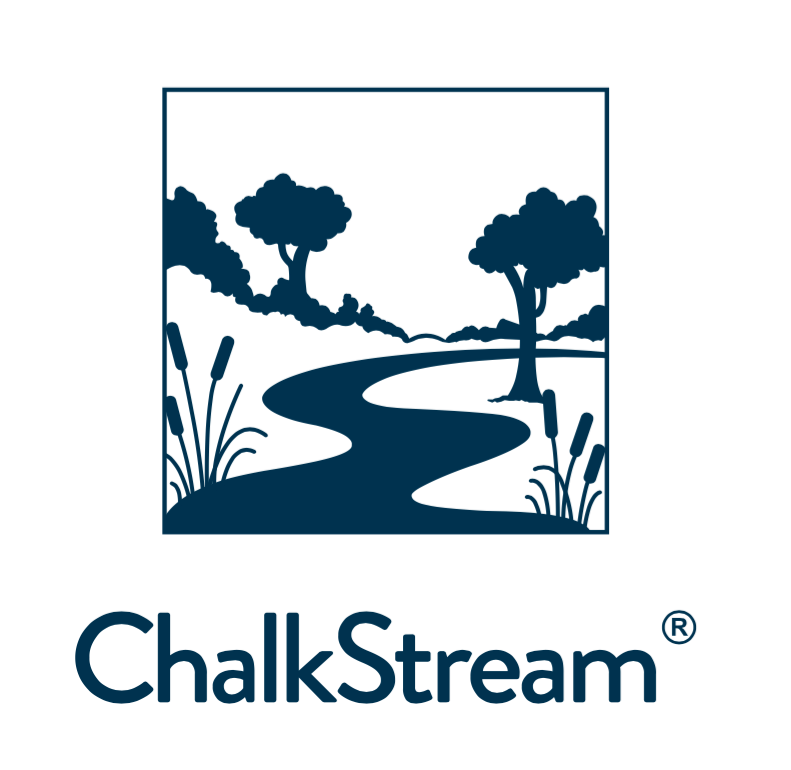Impacts
RESOURCE EFFICIENT

Fish are by far the most efficient producers of protein with the ability to convert 60% of their diet into edible meat. Trout feed on fish and insects in the wild and require some fish meal and fish oil in their diet. The diet of ChalkStream® trout uses fish meal and fish oil almost exclusively from trimmings i.e. a waste product from fish caught sustainably in UK and EU waters for human consumption. The amount of wild captured fishmeal and fish oil used is less than 1% of the total protein and fat content in the diet and is always from MarinTrust certified sustainably managed fisheries. To find out more detail about the ChalkStream® trout diet click here.
GOOD FISH GUIDE

The Marine Conservation Society combines scientific research, advocacy, education and community engagement to protect marine ecosystems and promote the sustainable management of marine resources. The Society has produced a Good Fish Guide to help consumers understand which fish are ocean friendly and identify more sustainable alternatives. Fish are rated 1-2 (sustainably caught or responsibly farmed) 3-4 (recommend seeking alternatives) or 5 (significant environmental concerns recommend avoid).

ChalkStream® trout fall under the category of Freshwater rainbow trout with Global G.A.P. certification, which is rated 2 'best choice'.
GLOBALG.A.P. farmed rainbow trout is well managed and management is thought to be mostly effective. The standard mitigates many areas of environmental concern in open net pen aquaculture, including discharge of effluents, use of chemicals, escapes, disease and parasite interactions.
The only area that scores negatively in this category is feed as 'the criteria on responsible feed are lacking in the GLOBALG.A.P. Aquaculture standard'. Given the use of trimmings within the ChalkStream® diet, we would expect that assessed independently ChalkStream® trout would achieve a Good Fish Guide rating of 1. You can access the rating on the Good Fish Guide here.
HABITAT
Our supplier farms use benthic testing to assess the effect of the farms on the chalk stream habitat. Benthic testing evaluates the abundance and variety of macroinvertebrates as an indication of the ecological status of the rivers. The farms are tested at both the inlet and outlet and the samples compared to evaluate the impact of the farms.
The report in 2024 identified no pollutant stress signatures from any of the supplier farms. Furthermore, there was no detectable impact on the River Itchen and only a slight Autumnal impact on one of the River Test farms.
'The causes of deterioration in chalk stream conditions was clearly not strongly associated with fish farms from this study'
Dr. Nick Everall FIFM C Env

Habitat Restoration:
ChalkStream® is supporting a programme of habitat restoration on the Test and Itchen rivers focussing initially on the expansion of the Wild Fisheries Protection Zone on the Upper Itchen. We are helping to fund the improved migration of wild fish and supporting the transition to wild fishing (no stocked trout) on 1.5km of river near Itchen Abbas. To learn more about our river restoration work click here.
WATER QUALITY
Water samples from the inlet and outlets of the farms have been routinely taken by the Environment Agency for over 40 years. Samples are generally tested for suspended solids, dissolved oxygen, nitrogen and phosphate with all farms having a high compliance with their licensed parameters.
The farms have also partnered with Southampton University on two major studies into water quality in the Test and Itchen rivers. The farms are assisting in the development of a multi-nutrient feshwater analyser, a small floating unit able to take readings every 15 minutes of all the key indicators of water quality. They are also collaborating on a major study to enhance the sustainability of fish farming on chalk streams.
CARBON
Methods of carbon profiling for food production are improving but as yet there is no standardised approach for aquaculture. ChalkStream® and its supplier farms are engaged with Seafish (public body supporting the UK seafood sector) to develop an industry wide carbon emissions tool. Similar to the Good Fish Guide, the tool would offer consumers a carbon rating for each wild caught and farmed fish.
With the exception of RAS (Recirculating aquaculture systems) which have high energy demands, the majority of carbon emissions on fish farms come from growing, sourcing, milling and transporting feed. Our supplier farms work closely with Skretting to monitor feed related carbon and make continued progress on reductions.
ChalkStream® supplier farms are gravity fed with no pumping required to move the water through the farms. The key contributor to carbon emissions on farm is the production and delivery of oxygen to boost the DO (dissolved oxygen) in the river water when DO levels fall due to large amounts of river weed. Significant efforts are being made to improve the efficiency of the farm oxygen systems and it is hoped that nanobubble technology will help reduce carbon emissions.
The farms have a programme of transitioning to electrical vehicles wherever possible.

Image taken by Anthony Simmonds on the River Test, Greatbridge, Romsey


